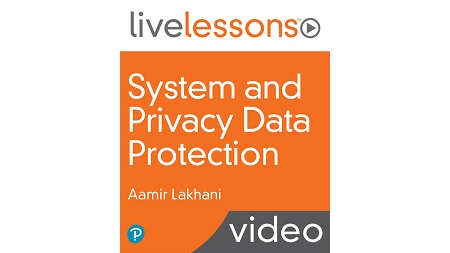
English | MP4 | AVC 1280×720 | AAC 48KHz 2ch | 63 Lessons (4h 30m) | 1.28 GB
Cybersecurity is not only about preventing data breaches and hunting for attackers, it also involves many aspects of system and data privacy. With more than 4 hours of video training, System and Privacy Data Protection LiveLessons provides learners with an understanding of how to protect and store existing data, as well as understand that data confidentiality and business impacts are critical to data protection. In this course, the learner will examine multiple aspects of system privacy and data protection ranging from basic concepts to tools that are commonly used by data practitioners.
System and Privacy Data Protection LiveLessons is taught by expert trainer, author, and cybersecurity expert Aamir Lakhani using hands-on demos, in-depth discussions, and lightboard explanations. This course will cover the best practices cybersecurity fundamentals in a way that is easy to access and implement in real world situations.
Topics include:
- Data Privacy and Protection
- Risk Mitigation
- Importance of Policies, Procedures, and Controls
- Analyzing Logs and Impact Analysis
- SIEMs and Query Writing
- E-Mail Analysis
- Automation
Learn How To:
- Manage your security and privacy
- Protect and store existing data
- Use common tools to analyze and store logs
- Conduct impact analysis and risk mitigation
Table of Contents
1 System and Privacy Data Protection – Introduction
2 Learning objectives
3 Privacy vs. Security
4 Non-technical Controls
5 Classification, Ownership, Retention, and Data Types
6 Confidentiality, Legal Requirements, and Data Sovereignty
7 Data Minimization, Purpose Limitation, and NDA
8 Technical Controls
9 Encryption
10 Data Loss Prevention (DLP)
11 Data Masking and Deidentification
12 Tokenization
13 Digital Rights Management (DRM) and Watermarking
14 Geographic Access Requirements
15 Access Controls
16 Learning objectives
17 Business Impact and Risk Calculation
18 Communication Risk Factors and Risk Prioritization
19 System Assessments
20 Compensating Controls and Training – Part 1
21 Compensating Controls and Training – Part 2
22 Supply Chain Assessment
23 Learning objectives
24 Frameworks
25 AUP, Password Policies, Data Ownership, and Other Procedures
26 Control Types
27 Audits and Assessments
28 Learning objectives
29 Event Logs
30 Syslogs
31 Firewall Logs
32 Web Application Firewall (WAF)
33 Proxy
34 Intrusion Detection and Prevention (IDS IPS)
35 Impact Analysis
36 Organizations Impact vs. Localized Impact
37 Immediate vs. Total
38 Learning objectives
39 Security Information and Event Management (SIEM) – Part 1
40 Security Information and Event Management (SIEM) – Part 2
41 Rule Writing
42 Known-bad Internet Protocol (IP)
43 Learning objectives
44 Malicious Payload
45 Domain Keys Identified Mail (DKIM)
46 Domain-based Message
47 Embedded Links
48 Impersonation
49 Header
50 Learning objectives
51 Workflow Orchestration
52 Security Orchestration
53 Security Orchestration, Automation, and Response (SOAR)
54 Scripting
55 Application Programming Interface (API) Integration
56 Automated Malware Signature Creation
57 Data Encrichment
58 Threat Feed Combination
59 Machine Learning
60 Security Content Automation Protocol (SCAP)
61 Continuous Integration
62 Continuous Deployment and Delivery
63 System and Privacy Data Protection – Summary
Resolve the captcha to access the links!